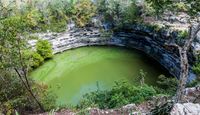3 Things to Know About Sinkholes From Groundwater Control Experts

Sinkholes occur when the earth above them collapses, causing anything above to fall into the underground cavern. They may occur in both rural and urban areas, presenting a danger to property and human safety. Protect yourself with the following guide to sinkholes, courtesy of your local groundwater control professionals.
Your Complete Guide to Sinkholes
What Are Sinkholes?
 Sinkholes are bowl-shaped hollows in the earth. They may be as small as a few feet wide to several acres across and run anywhere from one foot to several hundred feet deep. They cannot drain naturally and will hold rainwater, causing the dissolution of minerals beneath the surface.
Sinkholes are bowl-shaped hollows in the earth. They may be as small as a few feet wide to several acres across and run anywhere from one foot to several hundred feet deep. They cannot drain naturally and will hold rainwater, causing the dissolution of minerals beneath the surface.
How Do They Form?
The lack of groundwater control is the biggest cause of sinkholes. They are particularly common in areas that contain limestone, carbonate rock, or salt beds beneath the earth. Since sinkholes do not have drainage, they dissolve the rocky materials beneath them, forming craters and caverns. Though they often develop slowly and unnoticeably over time, they may also form suddenly when rock erodes and can no longer support the surface.
What Should You Do About Them?
Even sinkholes that appear small may extend deep into the earth, pulling anything in their vicinity down into them. This may result in serious injury or death, not to mention the destruction of property. If you notice them on your lot, do not approach them. Contact your groundwater control team, who will test the area for sinkhole activity. If present, they will safely fill the sinkhole until the area is once again stable.
Don’t take any chances with sinkholes. Allow the groundwater control experts at T Luckey Sons to take care of them. These professionals also offer soil stabilization, concrete jacking, and foundation repairs to clients all over the world. Call them at (513) 353-2345 to speak with a helpful representative about getting a quote on geotechnical services, and visit them online to learn more about their projects.
About the Business
Have a question? Ask the experts!
Send your question

